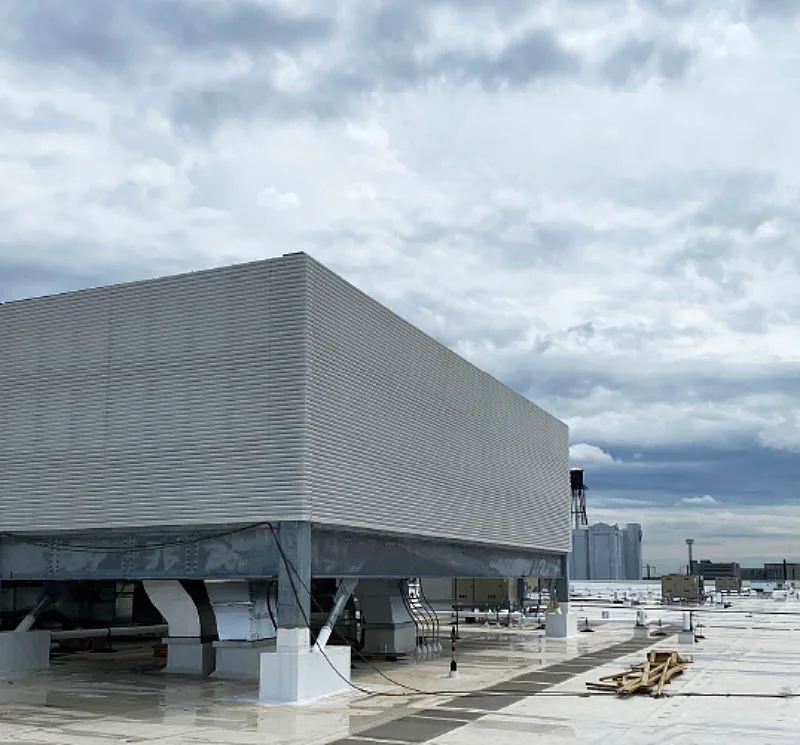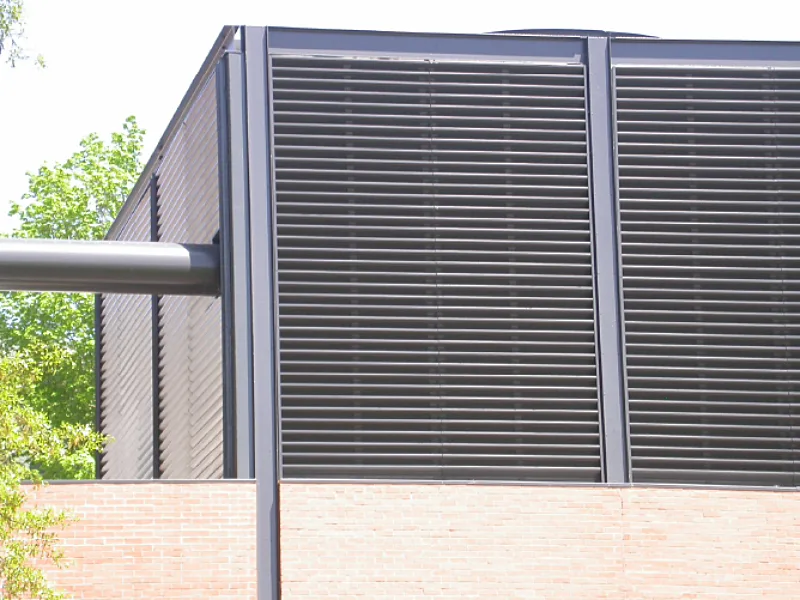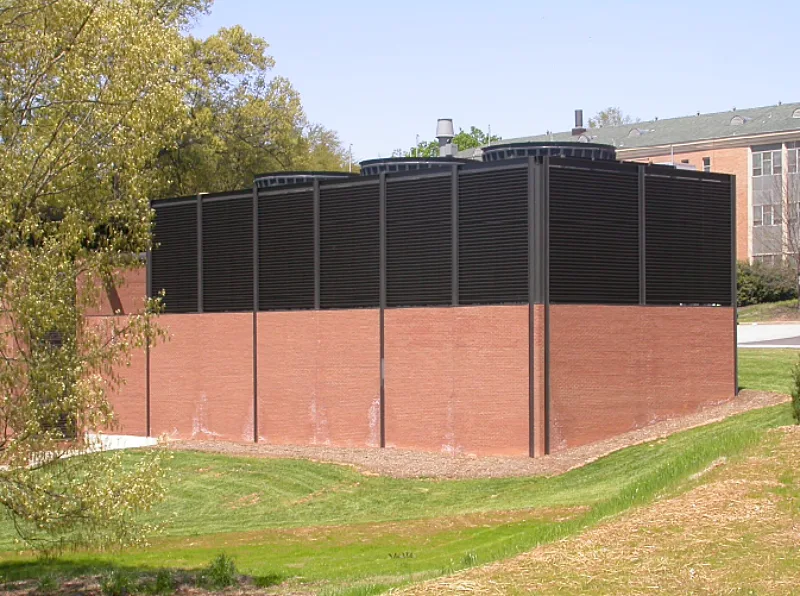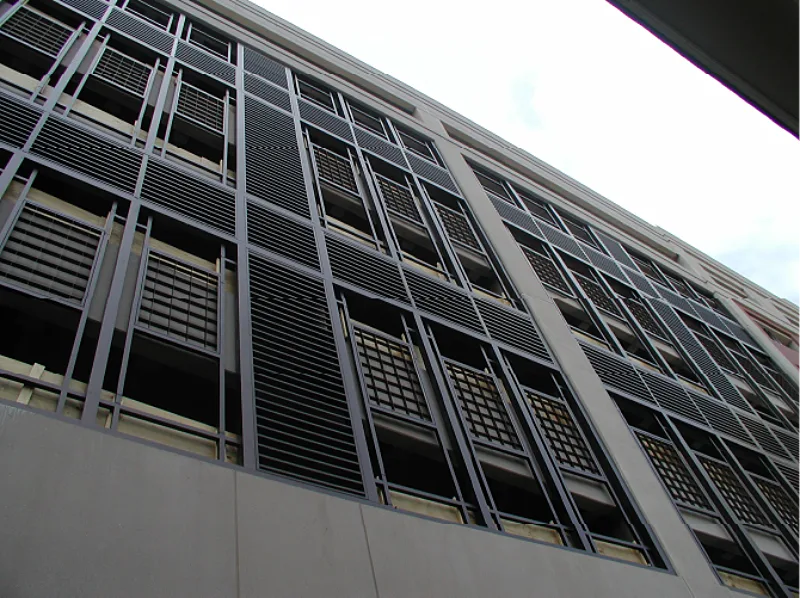The Need for Privacy
Your project will have outdoor spaces that you don’t want the public to see. Areas like garbage collection are necessary for your building, but you don’t want dumpsters and trash out in the open. You need a way to conceal these spaces. There may be other outdoor areas that require privacy.

Consider a break area for employees. They can get some fresh air while they relax during the workday. You may also have outdoor equipment that you want to keep out of the public view. Privacy will be important in this area. A fence louver system, like an equipment screen, can help you conceal the area from onlookers.
Establishing Privacy with Fence Louvers
Louvers are used in HVAC to prevent rain from entering a ventilation point. However, their unique design allows them to be used for other applications. For instance, you can use a thin line louver to add a straight-line aesthetic to the surface of a building.
Louvers can also work as sunshades. Mount a louvered panel over a window to block direct sunlight and provide shade during the heat of the day. The exact design will vary depending on its intended application. For a fence louver system, each panel is tailored to block sightlines into the space behind the panel.
Typically, louver blades will slope upward from the face to prevent incoming rain from dropping into the louver. Standard louvers will also have more space between their blades, since more free area means less pressure drop and more airflow efficiency. These designs work well for the louver’s purpose. For a fence louver, the purpose will be blocking sightlines.

Fence louver systems will use inverted blades that are closely spaced together. The closer spacing ensures that the blade profiles overlap across the free area between the blades, which blocks sight lines through the free area in the fence louver. The inverted blades block sight lines from below, so that onlookers don’t get a clear view into the space when looking up at the fence. The blades provide concealment for the space behind the louver, providing a privacy barrier for those inside the fence.
Fence Louver Construction
Additionally, fence louvers will not have a standard louver frame. Standard louvers will have a head, a sill, and two jambs which support the louver’s blades. The blades are fastened to the louver’s jambs, providing structural integrity to the blades while the louver accepts airflow. Fence louvers can have a similar design, as you can see in the picture below. For a continuous look, you can use lightweight panels supported by vertical blade supports. These supports are installed on the back of the blade, so that they are hidden from sight when viewing the panel from the front.
A light fence louver system will require a minimum of two vertical blade supports, one on each side, to provide the blades with the necessary support. Larger fences are often shipped as smaller panels, to be assembled at the installation site. For these assemblies, you may choose to have a continuous look between panels by attaching the blades of one panel to the VBS of a neighboring panel. Otherwise, you create a mullion that divides the panels into discrete sections.

Hidden mullions create a continuous look, so that the assembly looks like one large piece. Large panels may have a VBS in the middle of the panel, to support the longer blades. Manufacturers will often explain when an additional support is necessary, based on size. However, you may also need additional blade support to account for greater wind loads. An engineer can help determine the correct amount of support required for the size and wind load requirements of the louver.
Options for Fence Louver Systems
Corner options for fence louvers will include mitered style or post style. In mitered style, the blades meet at the corner and are miter-welded together. This style gives the impression that the blades meet to form the corners. For fence louvers, mitered corners are typically manufactured as a separate segment of the fence so that the adjoining panels have the right amount of support.
Post corners require a post cap, or a metal cover, where the blades meet. The blades fit inside the cap, so that the cap appears as the corner. This gives the fence louver a more solid look along the corners. Corner options will often come down to a style choice: do you want to keep that continuous look at the corners, or do you want to go with a more squared shape? Mitered corners keep the continuous look.
Manufacturers will also offer options for adding hinges and latches to panels, creating a gate for access into the fenced area. This is an excellent option for fence louver systems that conceal trash collection areas. Employees can open and close the gate as needed. Check the submittal for all available options.
Privacy is important. There will be outdoor areas that require privacy. Conceal these areas with a fence louver system.

AWV and Fence Louver Systems
At American Warming and Ventilating (AWV), we build louvers for a wide range of applications: from standard ventilation to severe weather protection, and even fence louver systems for creating private outdoor areas. Browse our full catalog of louvers online.
Ready to start your next project? Let AWV help you meet your louver requirements. Contact us today and let’s work together.






